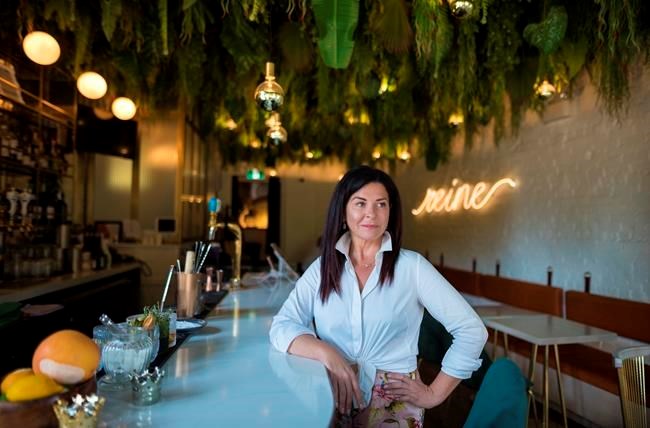TORONTO — When Canadians are handed payment terminals when dining out or grabbing takeout, there's usually a moment of discomfort as they quietly calculate how much to tip while restaurant staff hover nearby.
That anxiety has been exacerbated during the COVID-19 pandemic as many restaurants are on the brink of closure while some of their customers have lost their jobs.
"Some people take service quite seriously and they base their tipping on that. There's other people right now that are very aware of COVID-19 and want to help restaurants, but that's not everybody," said Nicki Laborie, the owner of the Reyna restaurants in Toronto.
"I've spoken to so many people who actually have no idea how deeply affected restaurants were during COVID-19 because they were closed for two to four months."
Many eateries have resumed operations since shutting down earlier this year, but the extent of their service is different depending on local health guidelines and customer behaviour. As confusion around restaurants continues to swirl, Laborie and other industry experts shared their advice on tipping in the COVID-19 era.
While they've all heard people talk about 15 per cent being an industry standard for tips, many agree that's an "old-school" figure and definitely doesn't account for the effects of the pandemic.
Laborie noticed plenty of dinners shift to 20 per cent in the years leading up to COVID-19 and in the pandemic's early days, she was stunned by some of the generosity shown towards her staff.
"People were tipping 20 to 25 per cent. It was amazing for my staff," she said. "Now that restaurants have reopened, I've definitely seen a major decline."
When she dines out, she usually gives 20 per cent for good service, 25 per cent for an exceptional experience and 15 per cent for a bad meal.
The average dine-in customer tips 18 per cent across restaurants using payments company Ready, said Laurent May, who heads the Vancouver-based business that enables customers to pay for meals through their phone without interacting with a server.
Takeout orders see tips of about 11 per cent, but May says it varies widely: Ready has customers that don't tip at all and others who tip between 20 and 30 per cent.
"Now is the time, if you can, to provide an additional tip, but the other factors I would think about are how was the ordering experience, was your food provided to you in a safe and COVID-compliant way and what was your overall impression of the restaurant," he said.
Johnny Cheng, a food industry accountant who runs the @foodie.fob Instagram account, said he has been tipping more ever since COVID-19 began because of the challenges restaurants are facing.
He doesn't think there should be a standard for tipping, but he does stick to a few rules.
"I usually tip when its restaurant takeout, but not fast-food or food court takeout," he said."
When he has a bad meal, he'll give some feedback to staff, but never requests compensation.
If service has been exceptional, he makes an effort to stop staff to really impress on them how wonderful they have been and he gives them a five-star rating on food apps.
Some restaurants are embracing a policy that creates a new wrinkle: no tips.
Toronto's Burdock Brewery did away with the practice, saying on Instagram that the move helps them provide a predictable living wage to staff during uncertain times, limit the back-and-forth with credit card machines that need additional cleaning and avoid race and gender prejudices by removing what can be an arbitrary customer choice.
Others are applying automatic tip rates or surcharges to offset the costs of extra sanitzation, lower customer volumes and physical distancing measures.
Cheng has yet to see a surcharge on his bills. If he does see it, he said he would subtract the fee before working out how much to tip.
Ryan Sciara, the owner of Sapori, has noticed customers have been tipping very generously on wine and charcuterie orders he personally delivers during the pandemic, but he certainty doesn't expect the gratuity and often discourages it.
"My general rule is tip the most for dining in because it is the biggest risk, staff are doing the most amount of work," he said. "I would back off a bit from there for delivery and then back off a bit again from there if you are just going to pick it up."
Diners shouldn't feel stress about tipping or feel forced to use a certain benchmark because everyone has different circumstances and tips are divvied up in a variety of ways depending on the restaurant, he said.
He recommends people stick to tipping rates they are comfortable with and that fit their means and the experience they had.
"People shouldn't feel like, 'Without me, this place is going to go under.' That shouldn't be on the customer," he said, noting tips on some items will amount to a few cents or dollars.
"Any tip is appreciated. Some places are going to help keep their lights on with that tip, but that tip should be out of the goodness of your heart and because you love the restaurant or you've been there a bunch of time or you know the owner."
This report by The Canadian Press was first published August 27, 2020.
Tara Deschamps, The Canadian Press




